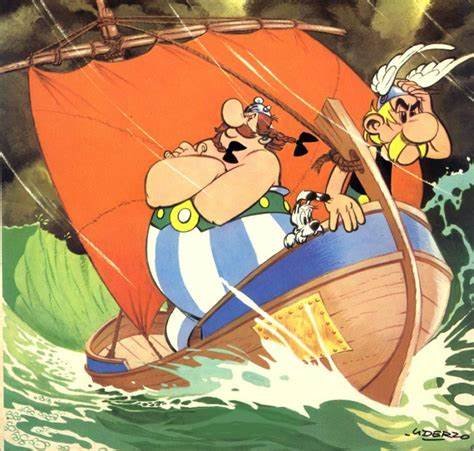Political cartoons have long been a staple of the media landscape, offering sharp commentary on current events, social issues, and political figures. In an age of rapid information consumption, political cartoons continue to play a crucial role in shaping public discourse. These satirical images, blending humor and critique, offer readers a unique perspective on the world around them. But how have political cartoons evolved, and what is their role in today’s media environment?
1. Offering Instant Commentary on Current Events
Political cartoons have the ability to provide quick, thought-provoking responses to unfolding events. In a world where news moves fast, these cartoons often offer immediate commentary that helps readers process complex or controversial issues.
- Timeliness: Political cartoons are often created in reaction to breaking news, political scandals, or social movements. By offering a humorous take on a current event, they help contextualize the news in a digestible, relatable way.
- Brevity and Clarity: In an age where attention spans are shorter, political cartoons condense complicated issues into clear, concise visual messages, making it easier for readers to understand key concepts quickly.
2. Using Humor to Address Serious Issues
Humor is one of the defining characteristics of political cartoons. They tackle serious subjects—politics, social inequality, corruption—with the power of satire and wit. The use of humor allows cartoonists to address sensitive or controversial topics in a way that might be more challenging in traditional forms of journalism.
- Satire and Irony: Political cartoons often use satire to mock politicians, policies, and institutions, pointing out hypocrisy and contradictions in a lighthearted yet powerful way.
- Engaging the Audience: By making readers laugh, political cartoons capture attention and spark conversations about issues that might otherwise be ignored or underrepresented in mainstream media.
3. Shaping Public Opinion and Sparking Debate
While political cartoons are humorous, they also carry serious weight. The cartoons can influence public opinion by presenting strong, often provocative views on important issues. A well-crafted cartoon can help shape the narrative surrounding a political event or cultural phenomenon.
- Challenging Authority: Political cartoons have always had a tradition of challenging those in power. By exaggerating the flaws of politicians or institutions, cartoonists can subtly critique authority while encouraging readers to question the status quo.
- Encouraging Discussion: These cartoons often generate discussion, both among the public and in the media. Whether sparking debates on social media or being shared in public forums, political cartoons create a space for dialogue around controversial topics.

4. Bridging the Gap Between Different Audiences
One of the unique aspects of political cartoons is their ability to communicate to a wide audience, transcending linguistic and cultural barriers through the power of visual imagery. In an increasingly globalized world, cartoons can break down complex issues into universal symbols that everyone can understand, regardless of their background.
- International Appeal: Many political cartoons feature universal themes—like corruption, inequality, and abuse of power—that can resonate across different countries and political systems.
- Cultural Reflection: Cartoons also reflect cultural shifts and changing social attitudes. By commenting on global issues, such as climate change, human rights, or international relations, cartoonists help shape international discourse.
5. Adapting to Digital Media and Social Platforms
In the age of the internet, the distribution and influence of political cartoons have expanded exponentially. While they were once confined to print newspapers, cartoons are now shared widely on social media platforms, online news outlets, and blogs.
- Digital Platforms: Websites and social media sites like Twitter, Facebook, and Instagram allow political cartoons to be instantly shared and discussed by a global audience. This rapid dissemination amplifies their impact and broadens their reach.
- Interactivity and Engagement: Online platforms enable readers to comment, share, and debate cartoons, creating an interactive experience that encourages more engagement than ever before. Cartoonists now receive instant feedback, which can sometimes shape the direction of future work.
6. Educating the Public on Political and Social Issues
Political cartoons have long played an educational role by helping readers understand complex topics in a simplified and accessible manner. Through visual storytelling, they break down intricate political situations or social phenomena into digestible visuals.
- Raising Awareness: Cartoons often highlight underrepresented issues—like social injustice, corruption, or government policy flaws—drawing attention to them in a way that is both informative and compelling.
- Engaging Young Audiences: Younger generations, especially digital natives, consume media in a different way, often preferring visual content over lengthy articles. Political cartoons, with their bold and colorful designs, can capture their attention and help educate them on key issues.
7. Preserving a Legacy of Political Discourse
Political cartoons provide a historical record of political and social events. By offering a snapshot of public opinion at a particular time, cartoons capture the mood of an era. Over time, these cartoons become historical artifacts that reflect the values, concerns, and conflicts of their time.
- Documenting History: Many iconic political cartoons from the past continue to serve as references in the study of political history. Cartoons from significant moments, such as the Civil Rights Movement or Watergate scandal, still hold relevance today.
- Creating a Cultural Archive: Political cartoons act as cultural documents, preserving the debates, controversies, and sentiments that shaped society.
Conclusion
The role of political cartoons in modern media is multifaceted and enduring. From offering immediate commentary on current events to shaping public opinion, these cartoons continue to influence and engage audiences worldwide. Their ability to blend humor with serious commentary makes them a powerful tool for critiquing authority, sparking debates, and educating the public on important issues. In today’s digital age, the reach of political cartoons has expanded, making them a key player in the broader conversation about politics, society, and global culture.











